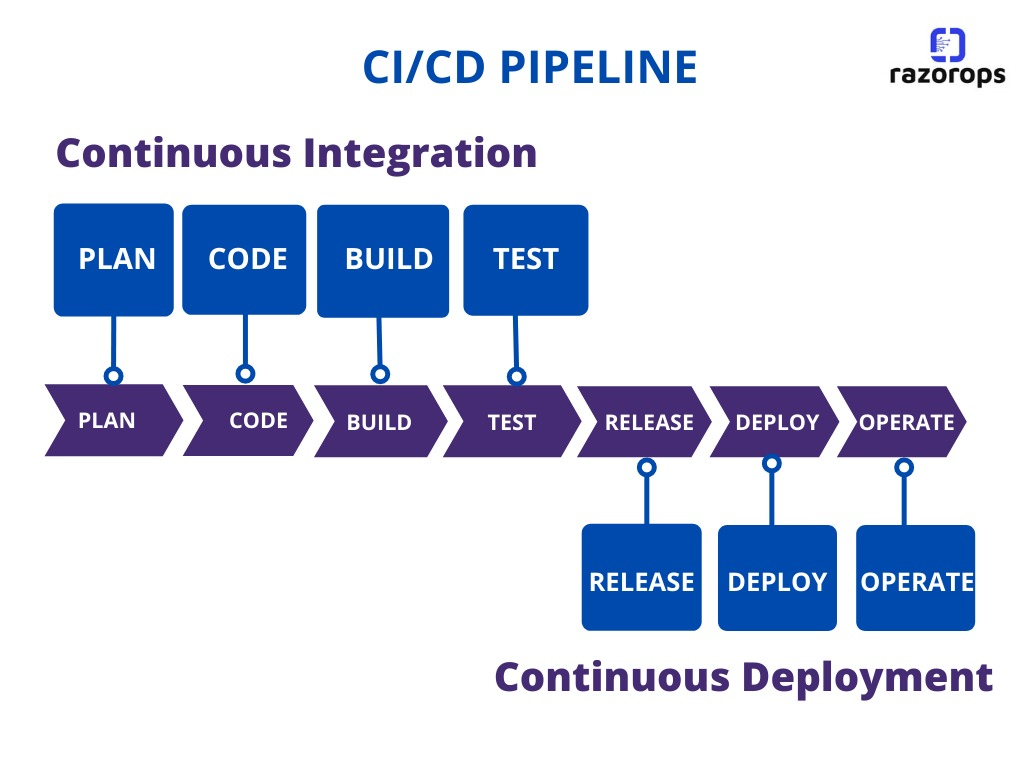CI/CD Pipelines
What are CI/CD Pipelines?
Definition:
“CI/CD Pipelines” in the realm of software development refers to a set of practices and automated processes aimed at Continuous Integration (CI) and Continuous Delivery (CD). CI involves regularly merging code changes from multiple contributors into a shared repository, followed by automated builds and tests to detect integration issues early. CD extends CI by automating the deployment of successful builds to production or staging environments, ensuring a continuous and efficient software delivery pipeline.
Analogy:
Think of CI/CD Pipelines as an assembly line for software. Similar to an assembly line that automates the production of goods, CI/CD Pipelines automate the stages of software development, from code integration and testing to deployment, streamlining the delivery process.
Further Description:
CI/CD Pipelines typically consist of stages such as code compilation, unit testing, integration testing, and deployment. Automated tools orchestrate these stages, allowing development teams to maintain a rapid and reliable release cycle. CI/CD practices enhance collaboration among developers, improve code quality, and enable the delivery of new features or updates with minimal manual intervention.
Why are CI/CD Pipelines Important?
CI/CD Pipelines play a crucial role in achieving efficient and reliable software delivery. They reduce the likelihood of integration issues, enhance code quality through automated testing, and accelerate the time it takes to bring new features or improvements to users. CI/CD practices contribute to a more agile and responsive development environment, fostering innovation and ensuring a smoother software release process.
Examples and Usage:
Automated Testing: CI/CD Pipelines often include automated testing to validate code changes, ensuring that new features or updates do not introduce bugs or regressions.
Deployment Automation: CD in CI/CD Pipelines automates the deployment process, allowing for consistent and reliable releases to different environments.
Code Review Integration: CI integrates code changes regularly, and CD automates the delivery of approved changes, streamlining the entire development lifecycle.
Rollback Mechanism: CI/CD Pipelines may incorporate rollback mechanisms, enabling teams to revert to a previous version quickly in case of deployment issues.
Basically, CI/CD Pipelines automate the stages of software development, from code integration and testing to deployment, fostering efficient and reliable software delivery.
For example, a software development team might use CI/CD Pipelines to automatically build, test, and deploy code changes, ensuring a continuous and streamlined delivery process.
Key Takeaways:
- CI/CD Pipelines automate the processes of Continuous Integration and Continuous Delivery in software development.
- They include stages such as code compilation, automated testing, and deployment to ensure efficient and reliable software delivery.
- Examples include automated testing, deployment automation, code review integration, and rollback mechanisms.
- CI/CD Pipelines enhance collaboration, improve code quality, and accelerate the delivery of new features or updates.





